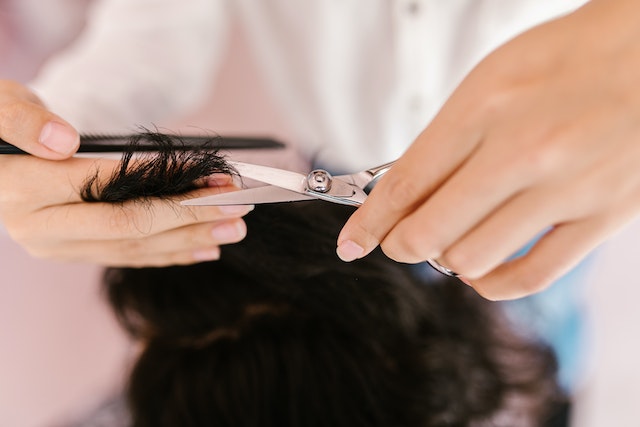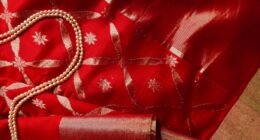Cutting hair wet offers precision and easy manageability while cutting hair dry allows for better control over texture and movement. Choosing between the two depends on personal preference, hairstyling skills, and the type of haircut you want to achieve.
Cutting Hair Wet Vs. Cutting Hair Dry – Key differences
Cutting hair wet and cutting hair dry are two very different methods of haircutting. The main difference between the two is that when you cut hair wet, the stylist can see every strand of hair more clearly because it is clumped together. This allows for a more precise and even cut.
On the other hand, cutting hair dry means that the stylist can see how each individual strand of hair will fall naturally without any additional weight from water or styling products. This makes it easier to determine where to make cuts in order to achieve a certain style or desired length.
When cutting wet, stylists often use combs and shears to create clean lines while ensuring each section is evenly cut. Meanwhile, when cutting dry, they may use razor blades or texturizing scissors to create layers and texture.
Ultimately, whether a client’s hair should be cut wet or dry depends on their specific needs and preferences. Those who want precision cuts may prefer having their hair cut wet while those looking for natural flow might opt for a dry-cut approach.
The Pros and Cons of Cutting Hair Wet
(Photo by cottonbro studio)

When it comes to cutting hair, one of the most debated topics is whether to cut it wet or dry. There are pros and cons to both methods, so let’s take a closer look.
One of the main advantages of cutting hair wet is that it allows for more precision. The water helps weigh down the hair and keeps it in place, making it easier to create clean lines and even layers. Additionally, wet hair tends to be more manageable than dry hair, which can make the process go faster.
However, there are also some downsides to cutting hair when it’s wet. For starters, your client won’t be able to see how their haircut will look until after you’ve finished styling their hair. This can lead to misunderstandings or disappointment if they don’t like the final result.
Another potential issue with cutting hair wet is that if you remove too much length or make a mistake while trimming your client’s locks because once dryness sets in on them its structure may vary from what was intended which would lead into an uneven cut.
There are benefits and drawbacks associated with both cutting techniques – ultimately leaving up to personal preference but also dependent on various factors such as texture and thickness- but by weighing these out against each other before starting any haircut session will help ensure a successful outcome regardless of whichever method suits best!
The Pros and Cons of Cutting Hair Dry
(Photo by RDNE Stock project )

Cutting hair dry is another popular method used by hairstylists. Here are some pros and cons of cutting hair dry.
Pros:
One of the biggest advantages of cutting hair dry is that it allows the stylist to see the natural texture and movement of the client’s hair. This helps in creating a more personalized haircut that suits their individual needs.
Another great advantage is that it saves time as there’s no need to blow-dry or style the hair before cutting, which makes it an ideal option for those on a tight schedule.
Dry cutting also works well for clients with curly or wavy hair, as this technique gives more control over how much length should be taken off without compromising on curl definition.
Cons:
The main disadvantage of cutting hair dry is that it can cause split ends if not done properly. Dry ends tend to fray easily, so taking too much at once could result in damaged strands.
Another drawback is that mistakes are harder to fix when using this technique since there’s no way to hide unevenness under wet sections.
Dry cuts may not work as well for those with straighter textures who want a precise blunt cut since they won’t have any weight from moisture to help create clean lines.
While there are both positives and negatives associated with dry cutting, ultimately choosing between wet vs. dry comes down to personal preference and what works best for each individual client.
Which is Better? – Cutting Hair Wet or Cutting Hair Dry?
When it comes to the question of whether cutting hair wet or dry is better, there’s no easy answer. Both techniques have their pros and cons, and ultimately what works best for one stylist may not work as well for another.
Cutting hair while wet can provide a more precise cut because the hair is easier to control and comb through. This can be especially helpful when creating specific styles that require precision and accuracy. Additionally, wet cutting allows for more uniformity throughout the haircut.
On the other hand, some stylists prefer to cut hair when it’s dry because they believe it provides a better representation of how the final style will look once complete. Dry cutting also allows for greater texturization by creating varied lengths throughout the hairstyle.
Ultimately, which technique is best will depend on individual preference and experience. Some stylists might find that they prefer one method over another depending on their client’s needs or desired look.
Regardless of which approach you take, remember to always communicate with your client about what you’re doing every step of the way so that they feel comfortable and confident in your abilities as a stylist.
How to Cut Hair Wet
When cutting hair wet, you have the advantage of being able to cut more precisely. The water in the hair can help weigh down and straighten out any kinks or curls, allowing for a smoother and cleaner cut.
- Before beginning, make sure the hair is thoroughly wet. Use a spray bottle if necessary to dampen any dry spots. Section off the hair into manageable portions with clips or elastics.
- Start at the back of the head and use your fingers to comb through each section before making any cuts. This will ensure that you are cutting evenly and not missing any sections.
- Hold your scissors at an angle while cutting rather than straight across. This allows for a softer edge and natural-looking layers.
- Be careful not to cut too much off at once; it’s always better to start with less and gradually work your way up if necessary.
- After finishing each section, spritz some water on it as needed before moving onto the next one. Don’t forget to blow-dry or air-dry after completing all cuts!
How to Cut Hair Dry
Cutting hair dry might not be as popular as cutting it wet, but it is still a valuable technique in the hairstyling industry. It’s perfect for people with curly or wavy hair since it allows you to see how the curls will fall naturally.
- To cut hair dry, start by sectioning the hair into small parts and combing each section thoroughly. This helps eliminate any tangles or knots that may cause uneven cuts.
- Next, use a pair of sharp scissors to trim off any split ends gently. Make sure you’re only taking off a tiny bit at first so that you don’t overcut your client’s hair.
- After trimming all sections of the hair, examine it from different angles to ensure consistency in length and shape. Don’t forget to keep checking if both sides are evened out.
- Style the client’s new haircut according to their preference and make sure they leave feeling confident and satisfied with their new look!
Featured Image By – Photo by Nataliya Vaitkevich









